Hussein T. Al-Natsheh
SPARTA: Speaker Profiling for ARabic TAlk
Dec 13, 2020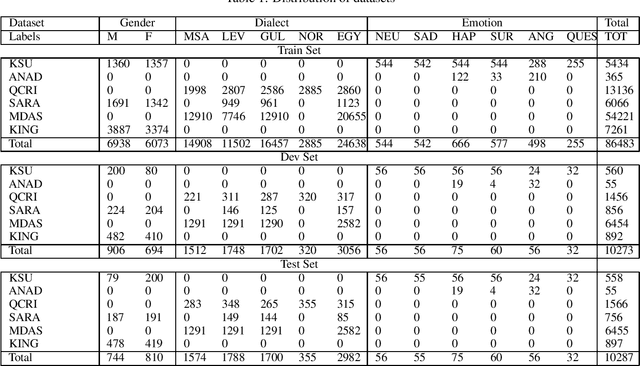
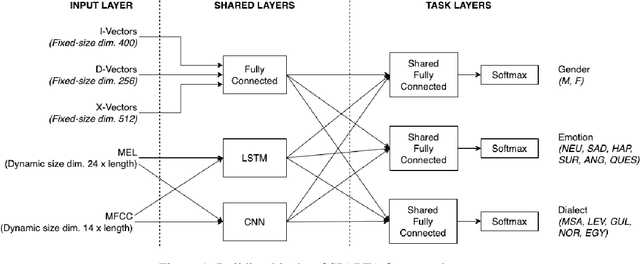

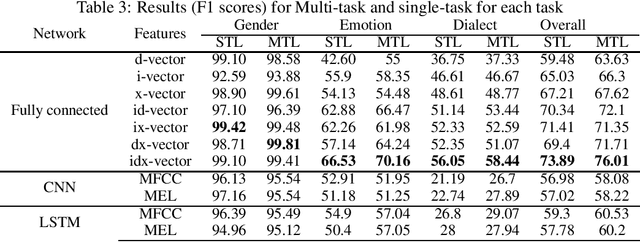
Abstract:This paper proposes a novel approach to an automatic estimation of three speaker traits from Arabic speech: gender, emotion, and dialect. After showing promising results on different text classification tasks, the multi-task learning (MTL) approach is used in this paper for Arabic speech classification tasks. The dataset was assembled from six publicly available datasets. First, The datasets were edited and thoroughly divided into train, development, and test sets (open to the public), and a benchmark was set for each task and dataset throughout the paper. Then, three different networks were explored: Long Short Term Memory (LSTM), Convolutional Neural Network (CNN), and Fully-Connected Neural Network (FCNN) on five different types of features: two raw features (MFCC and MEL) and three pre-trained vectors (i-vectors, d-vectors, and x-vectors). LSTM and CNN networks were implemented using raw features: MFCC and MEL, where FCNN was explored on the pre-trained vectors while varying the hyper-parameters of these networks to obtain the best results for each dataset and task. MTL was evaluated against the single task learning (STL) approach for the three tasks and six datasets, in which the MTL and pre-trained vectors almost constantly outperformed STL. All the data and pre-trained models used in this paper are available and can be acquired by the public.
Multi-Dialect Arabic BERT for Country-Level Dialect Identification
Jul 10, 2020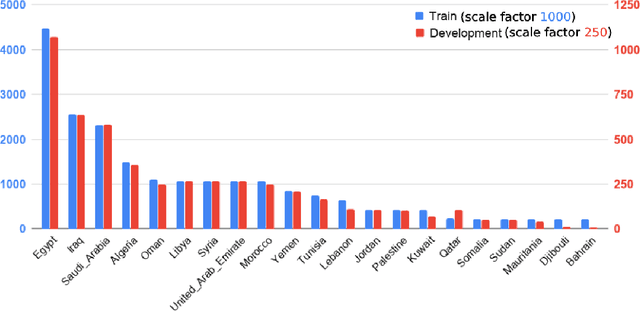
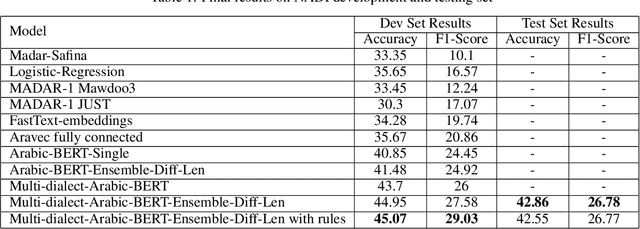

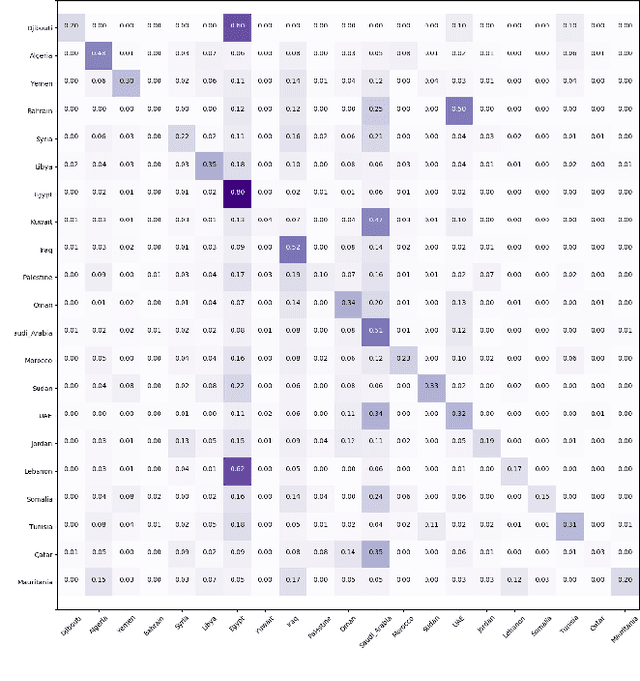
Abstract:Arabic dialect identification is a complex problem for a number of inherent properties of the language itself. In this paper, we present the experiments conducted, and the models developed by our competing team, Mawdoo3 AI, along the way to achieving our winning solution to subtask 1 of the Nuanced Arabic Dialect Identification (NADI) shared task. The dialect identification subtask provides 21,000 country-level labeled tweets covering all 21 Arab countries. An unlabeled corpus of 10M tweets from the same domain is also presented by the competition organizers for optional use. Our winning solution itself came in the form of an ensemble of different training iterations of our pre-trained BERT model, which achieved a micro-averaged F1-score of 26.78% on the subtask at hand. We publicly release the pre-trained language model component of our winning solution under the name of Multi-dialect-Arabic-BERT model, for any interested researcher out there.
Deep Contextualized Pairwise Semantic Similarity for Arabic Language Questions
Sep 19, 2019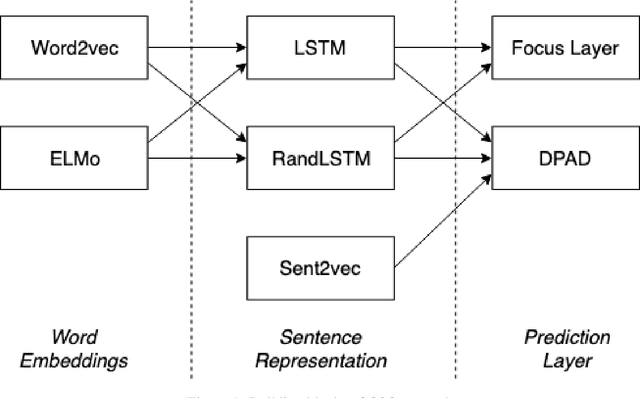
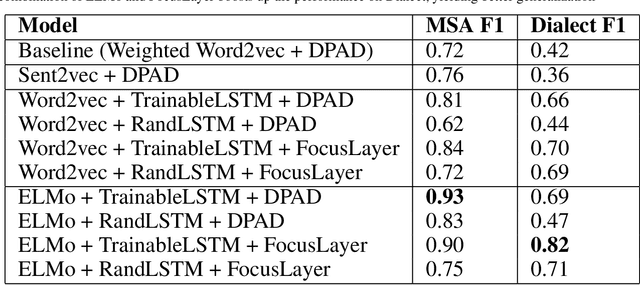
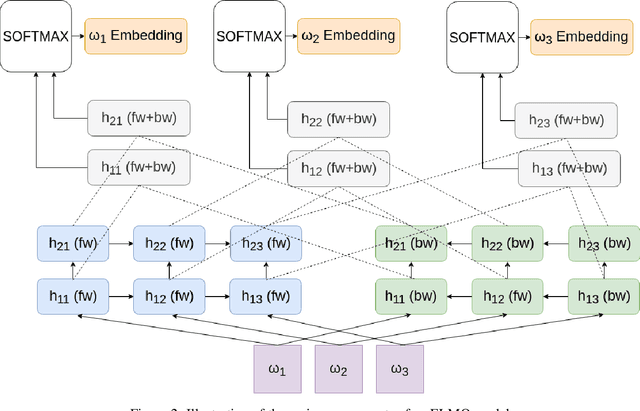
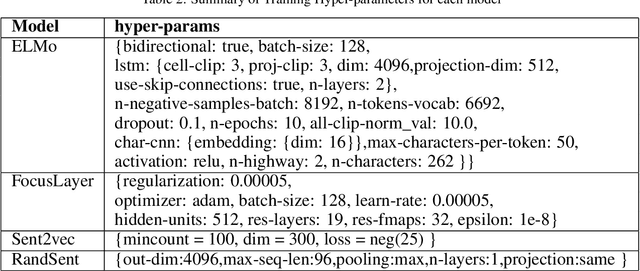
Abstract:Question semantic similarity is a challenging and active research problem that is very useful in many NLP applications, such as detecting duplicate questions in community question answering platforms such as Quora. Arabic is considered to be an under-resourced language, has many dialects, and rich in morphology. Combined together, these challenges make identifying semantically similar questions in Arabic even more difficult. In this paper, we introduce a novel approach to tackle this problem, and test it on two benchmarks; one for Modern Standard Arabic (MSA), and another for the 24 major Arabic dialects. We are able to show that our new system outperforms state-of-the-art approaches by achieving 93% F1-score on the MSA benchmark and 82% on the dialectical one. This is achieved by utilizing contextualized word representations (ELMo embeddings) trained on a text corpus containing MSA and dialectic sentences. This in combination with a pairwise fine-grained similarity layer, helps our question-to-question similarity model to generalize predictions on different dialects while being trained only on question-to-question MSA data.
NSURL-2019 Shared Task 8: Semantic Question Similarity in Arabic
Sep 12, 2019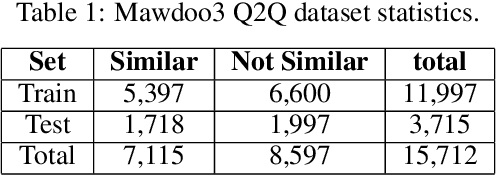
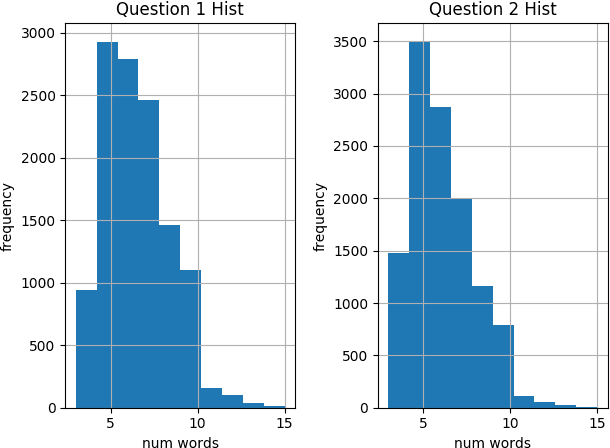
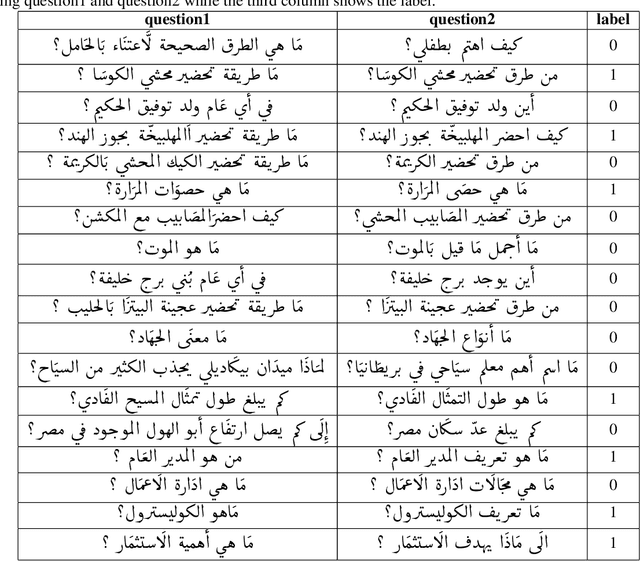
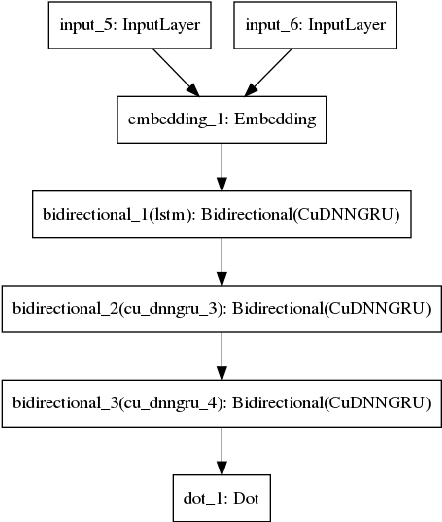
Abstract:Question semantic similarity (Q2Q) is a challenging task that is very useful in many NLP applications, such as detecting duplicate questions and question answering systems. In this paper, we present the results and findings of the shared task (Semantic Question Similarity in Arabic). The task was organized as part of the first workshop on NLP Solutions for Under Resourced Languages (NSURL 2019) The goal of the task is to predict whether two questions are semantically similar or not, even if they are phrased differently. A total of 9 teams participated in the task. The datasets created for this task are made publicly available to support further research on Arabic Q2Q.
Metadata Enrichment of Multi-Disciplinary Digital Library: A Semantic-based Approach
Jun 21, 2018


Abstract:In the scientific digital libraries, some papers from different research communities can be described by community-dependent keywords even if they share a semantically similar topic. Articles that are not tagged with enough keyword variations are poorly indexed in any information retrieval system which limits potentially fruitful exchanges between scientific disciplines. In this paper, we introduce a novel experimentally designed pipeline for multi-label semantic-based tagging developed for open-access metadata digital libraries. The approach starts by learning from a standard scientific categorization and a sample of topic tagged articles to find semantically relevant articles and enrich its metadata accordingly. Our proposed pipeline aims to enable researchers reaching articles from various disciplines that tend to use different terminologies. It allows retrieving semantically relevant articles given a limited known variation of search terms. In addition to achieving an accuracy that is higher than an expanded query based method using a topic synonym set extracted from a semantic network, our experiments also show a higher computational scalability versus other comparable techniques. We created a new benchmark extracted from the open-access metadata of a scientific digital library and published it along with the experiment code to allow further research in the topic.
 Add to Chrome
Add to Chrome Add to Firefox
Add to Firefox Add to Edge
Add to Edge